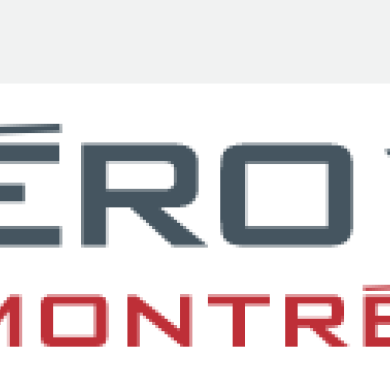8 juin 2021
Innovation
Rolls-Royce (4 juin)
Rolls-Royce has commenced testing components of a hybrid-electric aircraft propulsion system
at a UK facility. The tests will support development of a 2.5-megawatt power generation system.
Boeing ecoDemonstrator (3 juin)
Boeing will continue its” ecoDemonstrator” programme in 2021, using a 737 Max 9 to evaluate
new cabin sidewalls, 3D-printed cabin air vents, noise-reducing engine nacelles and a new firefighting
chemical. The aircraft will also be used to evaluate flight-control technology,
atmosphere-measuring equipment, and the use of biofuel.
Pangea Aerospace (2 juin)
Pangea Aerospace, startup espagnole, développe un moteur entièrement fabriqué en 3D et
réutilisable. Elle a récemment achevé une levée de fonds de 3 millions d'euros, et a levé plus de
6 millions d'euros de fonds depuis sa création en 2018. La startup développe un concept de
tuyère aerospike fabriqué en impression 3D en métal et qui utilise des carburants cryogéniques.
NASA (28 mai)
NASA has launched its Sustainable Flight National Partnership to advance the development of
hybrid-electric propulsion for single-aisle commercial aircraft, including building a "full-scale
technology demonstrator X-plane, to test and validate integrated systems and their benefits."
Spatial
Canadarm3 (2 juin)
The government of Canada has announced that MDA will “design, manufacture, test, and
deliver robotics interfaces” so that the Canadarm3 can operate on the NASA led Lunar Gateway.
This component of Canadarm3 is referred to as the Lunar Gateway External Robotics Interfaces.
Association européenne des industriels de l'espace (1 juin)
Selon une étude de l'association européenne des industriels de l'espace, durant les dix dernières
années, la construction européenne de satellites a dégagé́ un surplus net de 640 millions de
dollars par an, 300 millions pour les services de lancement et 150 millions pour les ventes
d'équipements et de systèmes spatiaux. Les industriels du spatial (satellites, lanceurs,
équipements) ont exporté pour 23,1 milliards de dollars au cours de la dernière décennie.
US Space Force (1 juin)
The Space Force plans to award contracts this year for development of next generation launch
capabilities. The Space Force's 2022 budget requests $221 million in research, development,
test and evaluation funding for Next Generation Launch System (NSSL) investment.
EarthDaily Analytics (31 mai)
The Canadian Space Agency (CSA) has awarded EarthDaily Analytics, formerly UrtheCast, a $2
million Space Technology Development Program (STDP) contract to develop Synthetic Aperture
Radar satellite on-board processing technology.
Drones- Advanced Air Mobility
Drone detection pilot project (3 juin)
Ottawa International Airport has published an update on its drone detection pilot project that is
due to end in December of this year. It is demonstrating two types of technology, radio
frequency (RF) detection and micro Doppler radar. RF drone detection is provided by Indro
Robotics and Remote Sensing and micro Doppler radar by QinetiQ.
Embraer /Halo Aviation (1 juin)
Halo Aviation has ordered 200 Embraer Eve electric vertical take-off and landing aircraft for
future air taxi networks in the US and UK. Prior to the arrival of the Eve aircraft, Halo will rely on
its Leonardo AW109 and AW169 helicopters, and Associated Aircraft Group's Sikorsky fleet.
Aevum (30 mai)
La startup Aevum a dévoilé le Ravn X, un drone de 25 tonnes mesurant 24 mètres de long pour
une envergure de 18 mètres. Avec ses deux moteurs de fusée, il pourrait placer en orbite basse,
via un lanceur de 150 kilogrammes de petits satellites, et ce, en moins de 3 heures. 95% des
composants du Ravn X seraient réutilisables. Il effectuera sa première mission opérationnelle en
2022 avec la mise en orbite du satellite ASLON-45 au profit de la Space Force.
Industrie Aérospatiale
Boeing – China (3 juin)
Boeing's CEO David Calhoun is again calling on the US government to normalise trade relations with China, which accounts for a vast portion of Boeing's historic and potential aircraft sales. Between 2010 and 2015, Boeing delivered nearly 600 aircraft to Chinese customers, or about 15% of its total deliveries during the period.
GKN Aerospace (3 juin)
GKN Aerospace has delivered the first fully integrated wings, empennage and EWIS for the Eviation Alice all-electric aircraft. The build and assembly took place at the GKN Aerospace Global Technology Centre in Bristol. Products were manufactured in the UK and Holland.
Boeing /B777-9 (3 juin)
Several airlines that ordered the Boeing 777-9 (777X) have voiced concerns over its promised performance. Emirates warned Boeing last week that it will reject the aircraft if it does not fully meet specification. The issues centre around the GE Aviation GE9-X engine which should deliver 10% lower fuel consumption compared to previous versions.
GE Aviation (2 juin)
GE Aviation recently broke ground in Beavercreek, Ohio on its new lean engine component manufacturing facility for aviation and aero derivative applications. The 280,000 square foot facility is expected to be fully operational by the end of 2022. It will consolidate manufacturing and technology development into one facility from the current seven.
Pratt & Whitney (2 juin)
Pratt & Whitney has said that its near-term focus is “improving the architecture” of the geared turbofan (GTF) engine, and possibly developing larger variants, while waiting for future low-emission technologies to mature. This may include the introduction of materials such as Ceramic Matrix Composites (CMC) in the turbine section. It and other Raytheon Technologies companies are also developing electric propulsion and hydrogen fuel technologies. The objective is to offer a clean-sheet powerplant when Airbus, Boeing and other airframers request it.
IMA Dresden /Applus+ (27 mai)
Barcelona based testing and certification company Applus+ has bought the materials testing laboratory IMA Dresden which works closely with the aerospace sector in structural and materials testing and has a comprehensive list of accreditations.
Mecachrome (26 mai)
Mecachrome has recently completed a fundraising round. It has benefited from a State
guaranteed loan from its banks with a financing of €60 million. The transaction will be
performed by the main shareholder Ace Management through a dedicated fund combining the
holdings of the Aerofund funds and the Fonds de solidarité FTQ (« Fonds »), as well as by
Bpifrance, the group's longstanding shareholder. They will together bring €50 million in equity
to Mecachrome alongside the financing provided by its banking partners under a PGE (prêt
garanti par l'Etat ).


